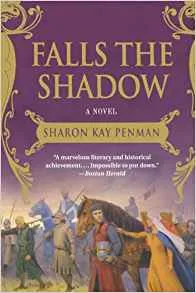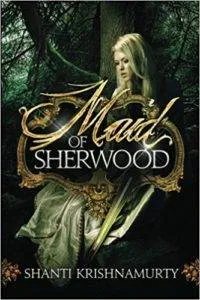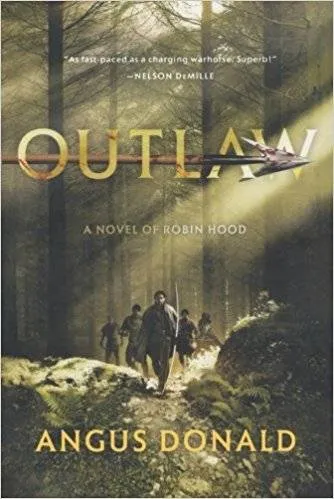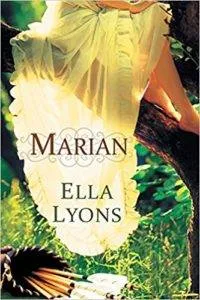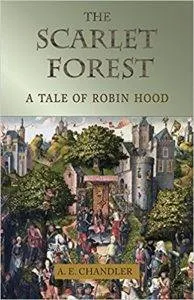
Robins of the Hood: Robin Hood Retellings and Histories
This content contains affiliate links. When you buy through these links, we may earn an affiliate commission.
Robin Hood is another one of those legends (along with Arthurian legend) that grabbed my attention from a young age. I’ve always been an Anglophile, so I was bound to be intrigued by it, but I think it goes deeper than that. There is just something about the idea of living in a huge, ancient, deciduous forest like Sherwood that makes me happy. I mean, who hasn’t dreamed of living in a treehouse at one point or another? When I was in England for school, I tried to go to Sherwood but I never really made it. I saw a bit of it as I was driving to Rievaulx Abbey in Yorkshire, but whizzing past it on the highway was as close as I got. It just seems free and beautiful. I don’t get to see a lot of real trees at home. I get thorny bush-like ugly things that have the nerve to call themselves trees. It’s a good thing I’m not bitter about it…
I also love the social justice elements of Robin Hood—robbing from the rich and giving to the poor always made me giggle with delight. As an adult, there are more subtle nuances to it I appreciate. I’m guessing that Trump, if he could read, wouldn’t be a fan of Robin Hood. Presidents aside, the basic issues remain relevant today. I’m not sure if it’s incredibly sad that we are still fighting poverty, inequality, race, and a plethora of other social issues today, or if it merely highlights the ways in which literature showcases universal themes of humanity. We’ll go with that. It’s less depressing.
The earliest recorded mention of Robin Hood was in 1226 in the York Assizes, a criminal court document. This particular document recorded, “Idem vicecomes debet xxxij. s. et. vj. d. de catallis Roberti Hod fugitivi,” or, “Also, the fugitive Robert Hod owes the sheriff 32 shillings and 6 pence.” You can see a facsimile of the York Assizes here, reprinted from the 1226 manuscripts, which was published in 1927. This is Robert Hod, a form of Robin Hood, and it’s clear he was a criminal of some sort though whether he was robbing from the rich and giving to the poor is really open to debate. The name Robert Hod (also Robin Hood, Rabunhod, Robehode, and many other variants) was a common name and alias, similar to John Doe today. It is possible that many of the recorded accounts, such as the York Assizes, were false names, especially since they were given in criminal accounts. Additionally, Robert was a super common name in the Middle Ages, and its diminutive form is Robin, and Hood was not an uncommon surname, referring either to a person who made hoods or who wore one. So…not helpful.
Another possible genesis for the Robin Hood legend, which most scholars today have since determined to be false but fun anyway, is that he and his men were followers of Simon de Montfort. Simon de Montfort was the 6th Earl of Leicester and, for a time, the de facto ruler of England after he led the Second Barons’ War in 1263 against Henry III. One of de Montfort’s greatest accomplishments was to introduce non-noble citizens into Parliament. Because of this, he is sometimes considered to be one of the founders of modern democracy. When he was killed at the Battle of Evesham on 4 August 1265, his men—those who managed to escape absolute slaughter on the battlefield—scattered and lived as outlaws, often harassing the king’s men. Sound familiar? The main difference is that the time was after King John, the traditional period of Robin Hood. Simon de Montfort and his men fought and died during the reign of Henry III, the son of King John, so it was only a tad off. Personally, I think it is entirely possible that the time frame of the Robin Hood legend was deliberately shifted to the reign of King John because John quite simply made for a better villain. He was well known for his horrible personality and temperament, a reign fraught with turmoil and conflict, numerous affairs with noblewomen, and questions of his religious devotion, personality traits which were considered to be deficiencies at the time. By contrast, Henry III, who also had a tumultuous reign, was supposedly a fairly genial man, very religiously devout, at least to all outward appearances, and was easily influenced by his advisors, most of whom were his close friends. In short, he was boring. As a writer, I would have preferred to use John instead, too.
The most reasonable explanation for Robin Hood is that he is a figure solely from mythology and folklore. There is support for this idea because he exists in ballads, which so often draw on myth and lore as their primary sources, as well as the collective imagination of the oral tradition of a culture. Additionally, elements within the ballads and poems, such as the color green Robin Hood typically wore, are linked to other mythic figures such as Robin Goodfellowe. The earliest known Robin Hood Ballad is “Robin Hood and the Monk,” written around 1450.
However, William Langland mentioned Robin Hood in a very brief passage in his work Piers Plowman in 1377. This brief mention may indicate that the legend was at least somewhat common in the oral tradition, and was working on making its way into the literary tradition. The Langland reference implies that Robin Hood might have been a somewhat popular story:
I know not Paternoster · as the priest it singeth,
But I know rhymes of Robin Hood · and Earl Randolph of Chester,
But of our Lord or our Lady · not the least ever made. (Passus V)
It was not until much later, however, with the 1883 publication of Howard Pyle’s The Merry Adventures of Robin Hood, that the legend really became popular in literature. As with much of Arthurian literature, the field of Robin Hood studies and popular literature is full of white men, though this is getting a little better, particularly in TV and film media. Below are a few novels by and about the Robin Hood legend that I’ve found interesting over the years. Which others would you recommend?
N.B.: The diversity is seriously lacking in this list. I had a HELL of a time finding any authors of color to include here. If you know of any, PLEASE let me know. But there are some awesome queer and gender bent retellings below, which I am here for all the time.
Quoted summaries are from the publisher summaries provided on Amazon.
Ok, so it’s not actually a Robin Hood novel. But a) Sharon Kay Penman is one of my favorite authors of all time and b) this novel focuses on Simon de Montfort, who, as you know, may have contributed in some way to the genesis of the Robin Hood legend. “Simon de Montfort was a man ahead of his time in the thirteenth century, a disinherited Frenchman who talked his way into an English earldom and marriage with a sister of the English king, Henry III. A charismatic, obstinate leader, Simon soon lost patience with the king’s incompetence and inability to keep his word, and found himself the champion of the common people.” This book is definitely worth a read, as are all of Penman’s books. She’s an absolute delight.
“Headstrong Marian du Luc would rather traipse through Sherwood Forest and spar with her family’s antique sword than wear the fancy dresses and ribbons her mother favors. Nevertheless, she conforms to her mother’s standards when her family is summoned to Nottingham Castle by the evil Prince John. Upon her arrival Marian is forced to endure the advances of the Sheriff of Nottingham while she secretly meets with the handsome outlaw ‘Hood,’ who has captured her heart with his passion for justice. Court intrigue tangles Marian in its web when she discovers horrendous truths about Prince John and the Sheriff, placing her life in jeopardy and forcing her to confront the hidden truths in her own family. Of course, everything would be much easier if she wasn’t head over heels with the one man the Sheriff would risk anything to kill…”
Alan a Dale’s story, set during the reign of Henry II. “When he’s caught stealing, young Alan Dale is forced to leave his family and go to live with a notorious band of outlaws in Sherwood Forest. Their leader is the infamous Robin Hood. A tough, bloodthirsty warrior, Robin is more feared than any man in the county. And he becomes a mentor for Alan; with his fellow outlaws, Robin teaches Alan how to fight—and how to win. But Robin is a ruthless man—and although he is Alan’s protector, if Alan displeases him, he could also just as easily become his murderer.”
Tomboy Marian Banner must turn into a little lady when her father moves them from the countryside to the big city of Nottingham. “But into Marian’s dull new world comes someone exciting—a girl named Robin Hood who is as courageous and dedicated as she is small. Robin is determined to become a knight, and she won’t let her gender stand in her way. The two girls quickly become inseparable. … When Marian’s father is killed and the king takes an interest in her, she’ll need Robin to prove she’s the hero she always wanted to be.” Lesbian YA retelling of Robin Hood.
“You are invited underneath the great greenwood tree to hear how a young man became a hero, and a hero became a legend. When Robin takes a shortcut through Sherwood Forest, the path he chooses leads not to Nottingham’s archery contest, but to a life on the run from the law. Unable now to become a knight, and joined by his childhood friends, Robin Hood leads the most infamous outlaw band ever to evade the king and his sheriff. … The forest is waiting.”



